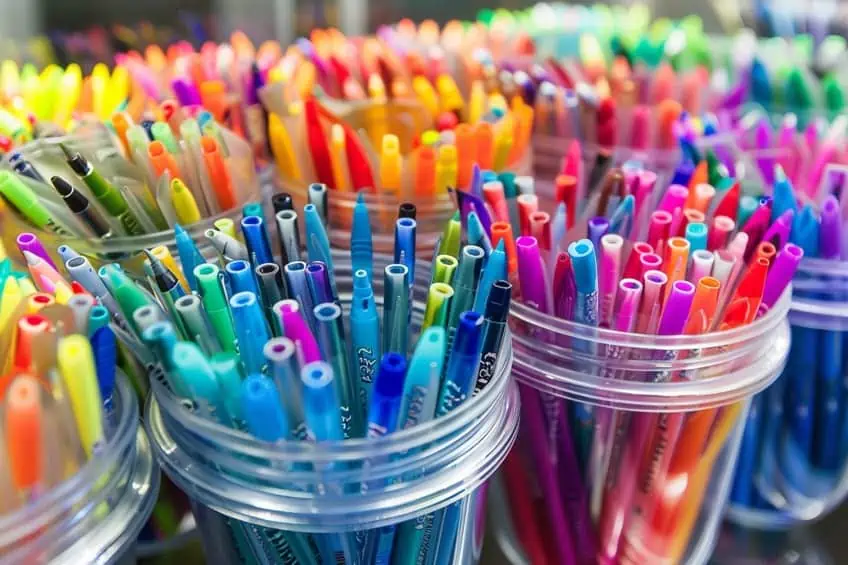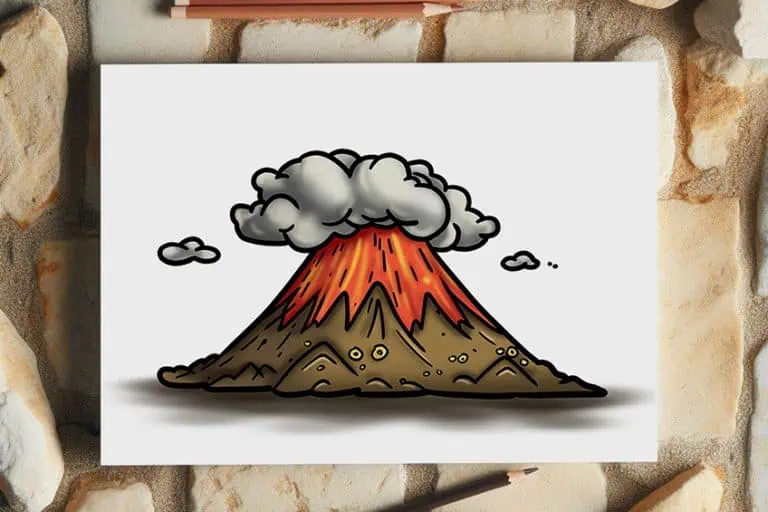How to Get Gel Pens to Work Again – Tips and Tricks
This post may contain affiliate links. We may earn a small commission from purchases made through them, at no additional cost to you.
Welcome to the colorful world of gel pens, where creativity knows no bounds! If you’ve ever found yourself in the frustrating predicament of a gel pen refusing to cooperate, fear not! In this article, we’ll dive into the whimsical realm of gel pens and unravel the mysteries behind coaxing these vibrant writing utensils back to life. From quirky tricks to ingenious hacks, get ready to reignite your artistic flair and bring your gel pens back from the brink of ink stagnation. So grab your gel pens and let’s embark on a journey to rediscover the magic of doodles, sketches, and vibrant masterpieces!
Table of Contents
Key Takeaways
- Gel pens can stop working due to clogs, but they can often be revived with simple methods.
- Understanding the mechanics of gel pens helps in effectively troubleshooting issues with ink flow.
- Proper care and maintenance of gel pens enhance the overall writing experience.
What Are Gel Pens?
Gel pens are a popular writing instrument known for their smooth ink flow and vibrant colors. However, they can sometimes stop working even when they still contain ink, which can be frustrating. Understanding the mechanics of gel pens and the common reasons for clogs can help users troubleshoot and restore their pens to good working condition. Simple household remedies often suffice to revive a non-functioning gel pen.

Reviving gel pens doesn’t need to be a challenge. Through various methods, such as gentle heating or solvent application, a seemingly dried-out pen can often be brought back to life. Implementing these techniques can not only save the pen but also ensure a consistent and pleasurable writing experience. By maintaining proper care and knowing how to effectively address ink flow issues, gel pen users can extend the life of their pens and reduce waste.
Why Do Gel Pens Dry Out?
Gel pens can dry out for a variety of reasons. The primary cause is the properties of gel ink; it’s water-based and more prone to evaporation compared to the oil-based inks used in ballpoint pens. Gel ink also carries a lower viscosity, which means the ink flows more fluidly but can dry quickly when exposed to air. The design of gel pens makes them more susceptible to drying. A pen left uncapped allows direct air exposure to the ink, accelerating the drying process. Similarly, improper storage, such as not keeping the pen upright, can lead to uneven ink distribution, which may result in a dry tip or a clog.
Environmental factors significantly influence the performance of gel pens. Temperature fluctuations affect the ink’s viscosity; cold thickens it, impeding flow, while heat can make it too runny or evaporate faster.
Additionally, exposure to air, whether due to uncapped storage or air bubbles in the cartridge, disrupts ink flow and leads to tip dryness. These considerations underscore the importance of proper pen storage and handling to maintain optimal performance. In summary, common reasons gel pens stop working include ink evaporation due to their water-based formulation, exposure to air when left uncapped, storage issues causing clogs or uneven ink distribution, and temperature extremes disrupting ink consistency. Understanding these factors helps troubleshoot and prolong the lifespan of your gel pens, ensuring smooth and uninterrupted creativity. Proper maintenance and storage of gel pens are critical in preventing premature drying and ensuring a long-lasting, smooth writing experience.
Understanding Gel Pens
Gel pens combine the smooth ink flow of rollerball pens with the non-smear benefits of ballpoint pens. They are unique in their use of water-based gels combined with pigments for vibrant and varied colors. This section digs into the composition and functionality of gel pens, explores common issues that can prevent them from working properly, discusses proper storage to prevent such issues, and provides troubleshooting tips to revive gel pens that have stopped working.

Composition and Functionality
Gel pens use a water-based gel that is thicker and more viscous than traditional water-based inks. This gel is capable of suspending various pigments, including glitter and neon colors, providing a wide range of vibrant colors that are difficult to achieve with oil-based inks.
The ink is delivered to the paper via a ball in the tip that rolls, transferring the ink from the cartridge to the writing surface.
Common Issues and Causes
The primary issues that can affect gel pens include drying out, clogging, and air bubbles that disrupt ink flow. Drying out can occur if the cap is left off, allowing the gel ink to harden at the tip. Clogging is often a result of dried ink inside the tip or cartridge. Air bubbles within the cartridge can interfere with ink delivery, leading to skips in writing.

Proper Storage Techniques
To prevent common gel pen issues, proper storage is essential:
- Store gel pens in a cool, dry place to avoid extremes in temperature.
- Keep pens in an upright position to reduce the risk of ink settling and creating clogs.
- Always place the cap on the pen after use to avoid the ink drying out.
- Ensure that the storage environment prevents the pen from being jostled, which can cause air bubbles.
Troubleshooting Tips
To revive a gel pen that is not working or is clogged:
- Shake the pen firmly to help remove any air bubbles or encourage ink flow.
- Scribble on a piece of scratch paper to get the ink moving.
- Tap the pen gently against a surface to help the ink reach the tip.
- If the tip is clogged, carefully use a needle to clear dried ink.
- Wipe the tip with a damp cloth to remove debris and dried ink.
- For a pen that has dried out, remove the ink cartridge and soak the tip in warm water.

Reviving Gel Pens
Reviving gel pens involves a series of practical steps and techniques to restore them for seamless writing or coloring. Whether it’s a metallic or glitter gel pen, successful revival enhances performance and extends the life of the pen.
Simple Techniques
One can often get a gel pen working again with some straightforward maneuvers. Shaking the pen vigorously can help dislodge any air bubbles or dried ink obstructing the flow. If shaking doesn’t remedy the issue, try doodling or scribbling on scrap paper to get the ink moving. In case of ink accumulation or debris, a safety pin can gently clear the pen’s tip.

Three simple methods can revive your gel pens in a pinch. First, give the pen a good shake to redistribute the ink. Second, try doodling or scribbling on a piece of paper to jump-start the flow. And third, employ a safety pin to gently unclog any obstructions in the pen’s tip. With these quick tricks up your sleeve, you’ll have your gel pens back to writing and drawing in no time!
Advanced Methods
For pens that require more involved intervention, the hot water method can be effective. Submerge the writing end of the pen in a cup of warm water, or alternately use a safety pin for more stubborn clogs. When dealing with harsher blockages, applying solvents like rubbing alcohol or acetone can dissolve the impediment. Reviving your gel pens is a breeze when using three common methods. Firstly, submerge the pen tip in warm water to help liquefy the dried ink. Secondly, tackle stubborn clogs with the gentle precision of a safety pin or small pliers.
Lastly, apply solvents like rubbing alcohol or acetone to dissolve hardened ink and restore optimal flow. With these effective techniques at your disposal, your gel pens will be back to unleashing colorful creativity in no time!
Ensuring Continuous Performance
To ensure a smooth ink flow, regular maintenance is key. It’s beneficial to store gel pens with the tip facing down, promoting a ready flow. Periodic cleaning of any ventilation hole and avoiding exposure to extreme temperatures can prevent many issues.
- Store tip-down
- Clean the ventilation hole regularly
- Avoid extreme temperatures

When to Replace Your Gel Pen
While reviving gel pens is often possible, some situations necessitate replacement. If there’s corrosion on the pen’s components, leaks that can’t be fixed, or the refill is exhausted, it’s time to consider a new pen.
- Obvious corrosion
- Irreparable leaks
- Empty refill
Safety Precautions
When applying heat or solvents to revive a gel pen, exercise caution. Never use a heat gun without observing proper safety measures and always work in a well-ventilated area. Also, differentiate between gel pens and other types, like ballpoint or rollerball pens, as they may require different care.
- Use heat and solvents with care
- Work in a well-ventilated area
- Understand your pen type (gel, ballpoint, rollerball)

Revitalizing your gel pens is not only a practical skill but also a gateway to unleashing your inner artist! Armed with a dash of creativity and a sprinkle of resourcefulness, you can conquer even the most stubborn ink-related challenges. Remember, whether you’re doodling your wildest dreams or jotting down notes, the journey to resurrecting your gel pens is a colorful adventure worth embracing. So, roll up your sleeves, grab your favorite gel pens, and let your imagination run wild as you embark on endless artistic escapades!
Frequently Asked Questions
Why Do Gel Pens Stop Writing Even When They Are Full?
Gel pens can cease to write due to the gel ink drying at the tip or air bubbles forming within the cartridge, which prevents the ink from flowing smoothly.
What Can I Do to Fix a Gel Pen With Air Bubbles?
If a gel pen has air bubbles, one can gently shake the pen to move the ink towards the tip. If this doesn’t work, rolling the pen between the hands or warming the tip with friction on paper may help remove the bubble.
What Are the Best Practices for Storing Gel Pens to Prevent Drying?
Gel pens should be stored vertically with the tip facing down to encourage ink flow towards the point. Keeping them in a cool, dry place away from direct sunlight also helps prevent the ink from drying out.
Matthew Matthysen is a multidisciplinary artist. He completed his fine art degree, majoring in History of Art and Contemporary Drawing Practice at the University of Witwatersrand, South Africa. Before joining acrylgiessen In 2020, Matthew worked part-time as an art teacher at Reddford Blue Hills High school. Matthew creates drawing and painting tutorials for acrylgiessen and captures them not only photographically and in written form. He also records the creation of his works in his own creative studio as in video format, from which later with a voiceover and a video editor also drawing tutorials for the Youtube channel of acrylgiessen are created.
Learn more about Matthew Matthysen and about acrylgiessen.







